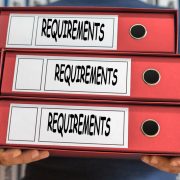What Can a Parent Do with Self-Direction to Save for Their Child’s Education?
When many investors hear about the concept of self-directing retirement accounts, they might get excited. The idea of putting money aside in investments that they know well—such as a real estate property—can be a powerful incentive for branching out on their own. They’re doing a good thing by thinking for the long-term. But there is one issue that many investors have: they need to put aside money for a specific purpose. And that purpose relates directly to how well they take care of their kids.
Fortunately, it is possible to self-direct for the purposes of investing in your children, through a Self-Directed Coverdell Education Savings Account. This account makes it possible for parents to save for their children’s education expenses in a way that they see fit.
How Does a Self-Directed CESA Work?
This is an account that is created to incentivize you, the parent, to help save for education purposes. You will designate a beneficiary under the age of 18—or a special needs beneficiary—who can then use the account at the appropriate time.
The key? Designating it as a Self-Directed CESA when you create it. That means that you have to get started where you are, even if you do not feel you have enough time to save.
To create this type of account, a Self-Directed IRA administration firm may be able to help with the documents necessary to ensure that you’re meeting the requirements of establishing the Self-Directed CESA.
Getting Money into a Self-Directed CESA
Of course, once you have established the account, your focus may immediately shift to the next step: getting money into it. After all, there is not that much time. Before you know it, your children will be grown up and it will be time to take care of their education. With the Self-Directed Coverdell Education Savings Account, you will be limited to $2,000 per year, no matter how many accounts you have created. That’s why it’s typical for many parents to simply create one per student; there’s no benefit to opening multiple per student, as the contribution limits will remain the same no matter what kind of wiggling you try to do there.
The tax deductions here are not tax-deductible. However, the money put into the account will grow tax-free until distribution, which can help you save some money that you would otherwise have to pay taxes on. Additionally, it’s worth noting that the act of creating an account of this type is great for psychologically setting aside the money to make sure that it ultimately goes to the place where it’s intended. It’s one thing to say that you’re saving for a child’s education; it’s another thing entirely to take the step of opening (and contributing to) a Self-Directed CESA.
Using the Self-Directed Coverdell Education Savings Account
You can find more details about how to use this account when it’s time to use it at our Self-Directed Coverdell Education Savings account page. However, it’s pretty straightforward. There is no tax on distributions if they are for the enrollment or attendance of an eligible educational institution, for example. That gives you plenty of incentive to use these funds directly toward tuition, helping your child or student make good on the expensive college education charges these days.
Interested in learning more about Self-Directed IRAs? Contact American IRA, LLC at 866-7500-IRA (472) for a free consultation. Download our free guides or visit us online at www.AmericanIRA.com.





